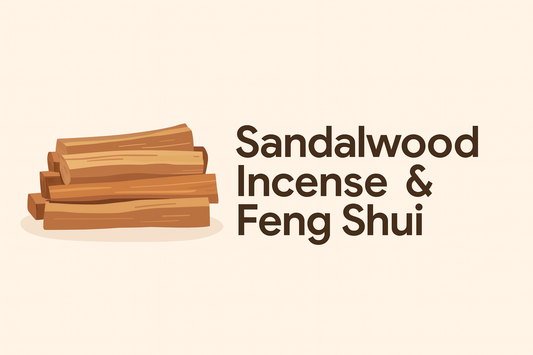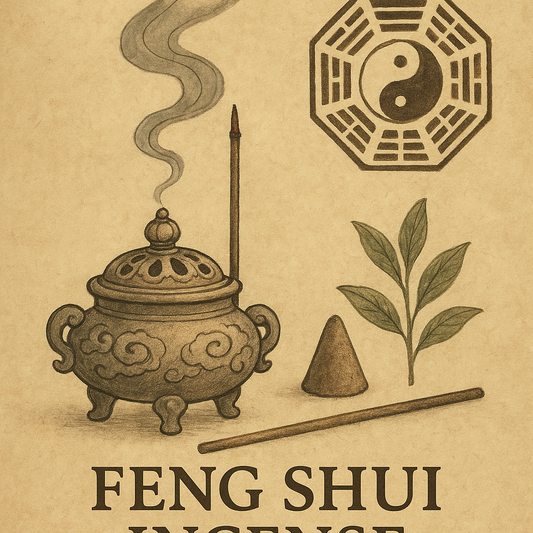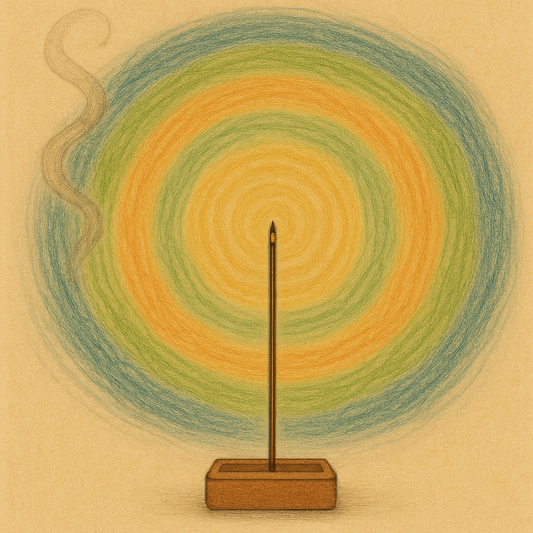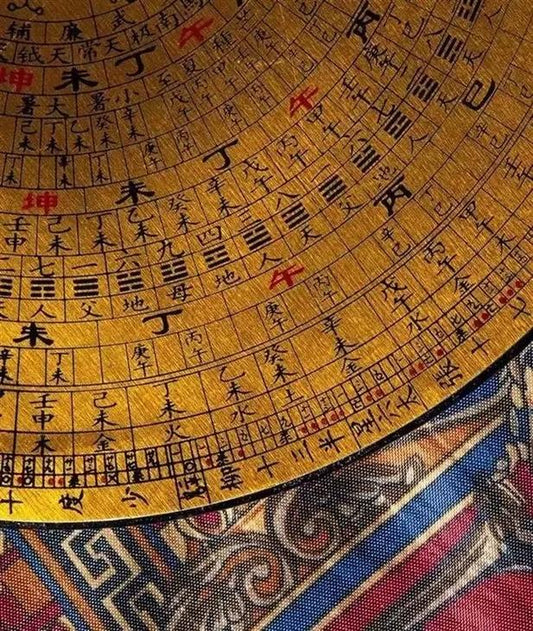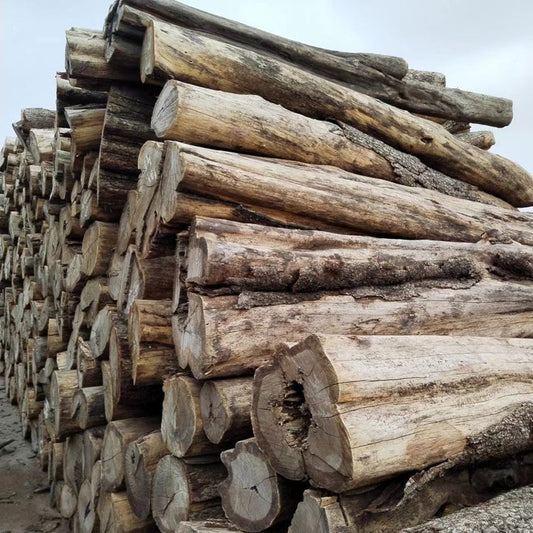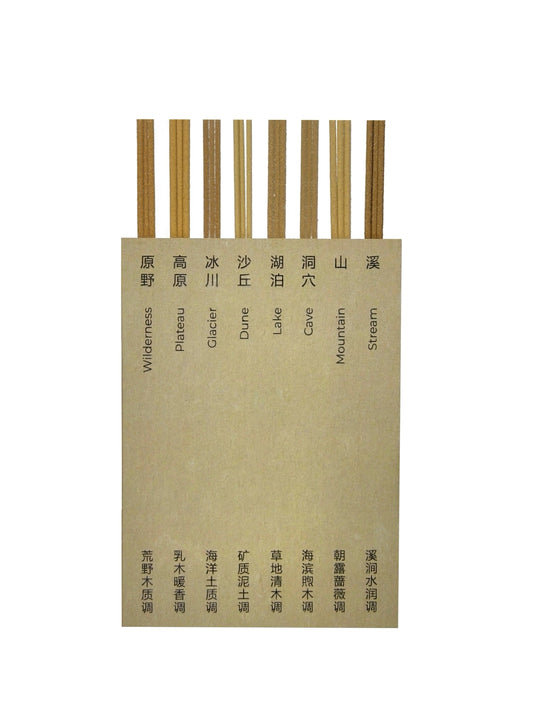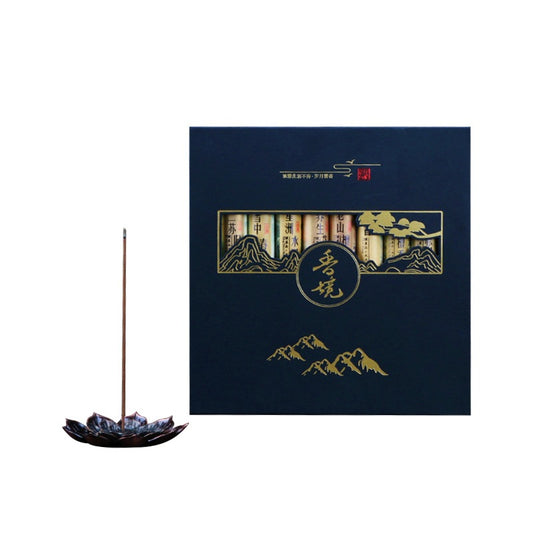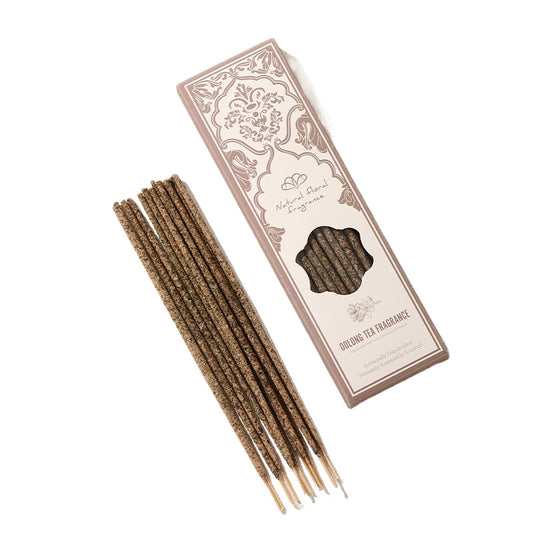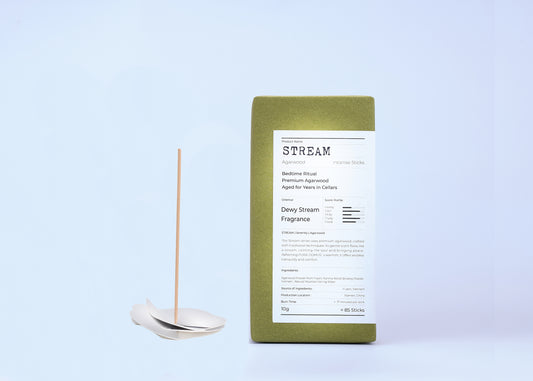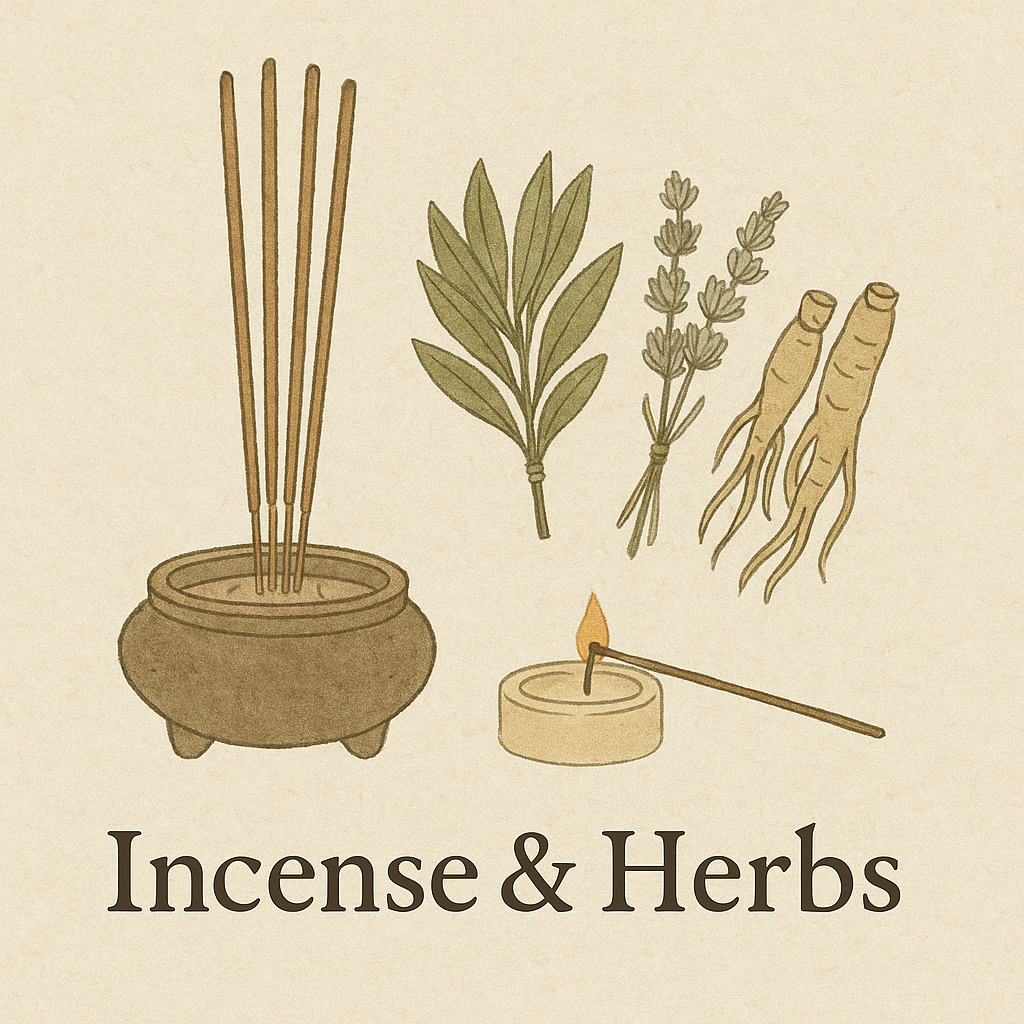
Chinese Incense and Traditional Chinese Medicine: A Holistic Approach to Well-being
Alright, let's talk about something fascinating: the intricate relationship between Chinese incense and Traditional Chinese Medicine (TCM). If you've ever found yourself drawn to the subtle power of natural aromas, whether in a serene London wellness centre or a quiet Sydney meditation space, you're already on the path to understanding this ancient connection. But how does that fragrant wisp of smoke truly interact with the foundational principles of Qi, Yin, and Yang? This isn't about magic or quick fixes; it's about a nuanced understanding of how aromatic compounds, rooted in centuries of observation, can support your holistic well-being. We're going to explore this connection with a clear, objective lens, so you can appreciate the historical and theoretical underpinnings without veering into unsubstantiated claims. Let's get to it.
The Historical Tapestry: Aromatic Practices in Ancient China Chinese incense history TCM aromatic practices
The use of aromatic substances in China for health and spiritual practices stretches back millennia, long preceding the formal codification of TCM. Incense was more than just a ceremonial tool; it was an integral part of daily life and early health practices.
From Ancient Roots to Integrated Practice: The Evolution of Aromatic Influence incense influence ancient China TCM
Historical accounts suggest that aromatic plants were recognised for their properties by figures like Emperor Shennong, a legendary pioneer of Chinese agriculture and medicine. Early records, some dating back over 2,000 years, indicate that aromatic substances were used in various forms, often heated to release their volatile compounds. These practices laid the groundwork for what would later become sophisticated applications within TCM. During the Han and Tang dynasties, the understanding and application of aromatics expanded significantly. Texts from these periods detail specific aromatic blends used to influence the body's energies and support overall health. Physicians would incorporate these aromatic practices to promote balance and vitality. Imagine the subtle yet pervasive presence of these aromas in a scholar's study in ancient Beijing, or within a healing space in Guangzhou, contributing to an environment conducive to well-being.
- Ancient Recognition: Aromatic plants noted for properties by early figures like Emperor Shennong.
- Historical Development: Practices evolved through Han and Tang dynasties, integrating into daily life and health support.
- Purpose: To influence body energies and support overall vitality.
The TCM Perspective: Understanding Aromatic Interactions with Qi and Meridians incense TCM principles Qi meridians
To appreciate how Chinese incense relates to TCM, we need to consider core concepts such as Qi (氣), Yin and Yang, and the Meridian system. These concepts provide a framework for understanding the body's energetic landscape.
Qi: The Fundamental Energy Qi energy flow incense TCM
In TCM, Qi is understood as the fundamental life force that animates all living things and flows throughout the body. A balanced and unimpeded flow of Qi is associated with health and vitality. Disruptions or imbalances in Qi can manifest as various forms of discomfort or illness. Aromatic compounds, when inhaled, are believed to subtly interact with this Qi. Different scents are thought to possess distinct energetic qualities that can influence Qi's movement: some may encourage its circulation, others might help to calm an agitated state, and some could assist in addressing stagnation. Consider how a particular aromatic blend might offer a sense of invigoration on a damp Manchester morning, subtly influencing your energetic state.
- Concept: Vital life force; balanced flow is essential for health.
- Aromatic Interaction: Scents are believed to subtly influence Qi's movement and balance.
Yin and Yang: The Dynamic Equilibrium Yin Yang balance incense TCM
Yin and Yang represent the complementary and interdependent forces that constitute all phenomena in the universe. In TCM, health is viewed as a dynamic equilibrium between these two forces within the body. Aromatic blends can be formulated with ingredients that are traditionally associated with either Yin or Yang properties, thereby aiming to support this balance. For instance, certain warming aromas might be considered supportive of Yang, while cooling or calming scents might be associated with Yin. A practitioner in a bustling Shanghai clinic might select an aroma to help soothe an individual experiencing excess heat (Yang), while a calming blend could be chosen to support equilibrium for someone in a high-stress London environment.
- Concept: Complementary forces; health is a dynamic balance between them.
- Aromatic Support: Blends can be formulated to support Yin or Yang properties, aiding equilibrium.
Meridians: The Energetic Network meridian system incense energetic pathways
The Meridian system in TCM describes a network of energetic pathways that traverse the body, through which Qi is believed to flow, connecting various organs and bodily functions. While acupuncture directly stimulates points along these meridians, aromatic compounds, particularly through inhalation, are thought to subtly engage with these pathways. The volatile molecules, upon entering the respiratory system, are theorised to interact with these energetic channels, contributing to their overall influence on the body. This offers a non-invasive approach to engaging with these vital energetic networks. Imagine the subtle yet pervasive influence of a carefully chosen aromatic blend, gently interacting with your energetic system, perhaps in a tranquil Edinburgh setting.
- Concept: Energetic pathways for Qi flow, connecting organs and functions.
- Aromatic Engagement: Inhalation of aromas is thought to subtly interact with these pathways.
Key Ingredients and Their Traditional Associations in TCM Chinese incense ingredients TCM associations
Chinese incense blends are often composed of specific ingredients, each with traditional associations within TCM. These are not random selections but are based on centuries of empirical observation and theoretical understanding.
Agarwood (沉香 - chénxiāng) Agarwood TCM properties Chinese incense
Highly valued in TCM, Agarwood is traditionally considered warm and acrid. It is associated with the spleen, stomach, and kidney meridians. Its traditional functions include:
- Supporting Qi Circulation: Believed to assist in the smooth flow of Qi, particularly in the chest and abdominal regions.
- Warming the Kidneys: Traditionally used to support kidney Yang, which is linked to vitality.
- Calming the Spirit (安神): Its deep, grounding aroma is often used to promote a sense of calm and focus, making it a choice for meditation and practices aimed at reducing restlessness. For those navigating the pressures of a financial career in London, a moment with agarwood aroma can offer a valuable pause.
Sandalwood (檀香 - tánxiāng) Sandalwood TCM properties Chinese incense
Sandalwood is traditionally described as sweet and warm, with associations to the spleen, stomach, and lung meridians. Its properties are thought to include:
- Harmonising the Middle Jiao: Traditionally used to support digestive harmony.
- Calming the Heart and Spirit: Often employed to promote mental clarity and reduce feelings of stress, making it a popular choice for creating a peaceful atmosphere. Consider the serene environment it could foster in a bustling Sydney office.
Frankincense (乳香 - rǔxiāng) and Myrrh (沒藥 - mòyào) Frankincense Myrrh TCM properties
These two resins are frequently used together in TCM. Frankincense is warm and acrid, while Myrrh is bitter and neutral. They are traditionally associated with invigorating blood and addressing stagnation, believed to influence the heart, liver, and spleen meridians. Their traditional uses include:
- Supporting Blood Circulation: Aimed at alleviating discomfort associated with blood stagnation.
- Addressing Swelling: Traditionally used for conditions involving swelling.
- Promoting Tissue Support: Thought to aid in the body's natural processes of tissue regeneration. These are potent ingredients, often found in blends designed to support physical well-being, perhaps in a traditional healing setting in the Cotswolds.
Mugwort (艾葉 - àiyè) Mugwort TCM moxibustion Chinese incense
Mugwort is warm and bitter, traditionally associated with the spleen, liver, and kidney meridians. It is famously used in moxibustion, where dried mugwort is burned near specific points to warm and stimulate Qi and blood flow. In aromatic applications, it is used for:
- Dispelling Cold and Dampness: Traditionally used to address conditions linked to cold and dampness, such as joint discomfort.
- Supporting Circulation: Believed to enhance the flow of Qi and blood.
- Purification: Also used for cleansing spaces. A traditional presence in rural Chinese homes, and increasingly recognised in health-conscious communities in places like Brighton.
Application Approaches: Beyond Simple Burning Chinese incense TCM application methods
While the burning of incense sticks is a common method, TCM has historically employed various ways to utilise aromatic herbs.
Incense Burning (焚香 - fénxiāng) incense burning TCM benefits
This is the most direct method. The smoke carries the aromatic compounds into the air, where they are inhaled. The traditional understanding is that these compounds, upon inhalation, can influence the respiratory system, and subsequently, the broader energetic network of the body. This method is often used to create an atmosphere conducive to meditation, relaxation, or to support a sense of overall well-being. Imagine a quiet study in Oxford, filled with the grounding aroma of agarwood, aiding concentration.
Herbal Sachets (香囊 - xiāngnáng) herbal sachets TCM traditional Chinese medicine
These are small bags filled with aromatic herbs, often worn or placed in living spaces. They release their scents slowly, providing a continuous, subtle aromatic presence. Sachets have been traditionally used to support general well-being and to harmonise Qi. They offer a portable form of aromatic influence, ideal for carrying in a handbag in Leeds or placing by your bedside in Dublin.
Incense Paste (香膏 - xiānggāo) incense paste TCM topical application
Historically, incense pastes were topical applications made from ground aromatic herbs mixed with a binder. These were applied directly to specific areas or points on the body to deliver localised aromatic influence. This method allowed for a more targeted approach, directly engaging with specific energetic pathways or areas of stagnation.

Common Questions: Chinese Incense & TCM (FAQ) Chinese incense TCM FAQs
Let's address some common queries about this fascinating subject.
Q: Is all Chinese incense suitable for TCM-related practices? TCM incense quality ingredients
A: Not all incense is created equal. For practices aligned with TCM principles, the quality and purity of ingredients are crucial. Many commercially available incenses may contain synthetic fragrances or additives that do not align with traditional formulations and could potentially detract from the intended benefits. It is advisable to seek out natural, high-quality Chinese incense made from authentic, traditionally sourced herbs and woods from reputable suppliers who prioritise purity and traditional craftsmanship. This ensures alignment with the historical and theoretical basis of TCM aromatic practices.
Q: How can I incorporate Chinese incense into my personal well-being routine? using Chinese incense for wellness
A: Begin by selecting a natural, high-quality incense blend that resonates with your personal preferences and desired atmosphere. For promoting relaxation, blends featuring sandalwood or agarwood are often chosen. For a more invigorating atmosphere, consider blends with warming aromatic spices. Always ensure adequate ventilation in your space. You might use incense during meditation, as part of a pre-sleep routine, or simply to create a calming environment. Pay attention to how different aromas influence your sense of well-being. It's a personal journey of exploration, whether you're in a busy London flat or a peaceful Cornish coastal home.
Q: Are there scientific insights into incense and TCM? incense TCM scientific research
A: While TCM is founded on centuries of empirical observation and theoretical frameworks, modern scientific inquiry is increasingly exploring the mechanisms behind traditional practices. Research is beginning to investigate the properties of aromatic compounds found in incense, examining their potential influences on physiological and psychological states. While further comprehensive studies are needed to fully elucidate these interactions, there is growing interest in understanding the therapeutic potential of natural aromatics. For example, ongoing research explores the effects of compounds like alpha-pinene (found in frankincense) on neural activity. [1]
Q: Can incense be a standalone treatment in TCM? incense vs TCM treatments
A: Incense, within the context of TCM, is generally considered a supportive practice rather than a primary treatment. It is often integrated into a broader holistic approach that may include other modalities such as acupuncture, herbal formulations, dietary considerations, and lifestyle adjustments. It is not intended as a substitute for professional medical advice or treatment for serious health conditions. Always consult with a qualified TCM practitioner or healthcare professional for diagnosis and treatment plans. View it as a valuable component within a comprehensive well-being strategy.
The MonianLife Philosophy: Bridging Ancient Wisdom with Modern Purity MonianLife Chinese incense TCM philosophy
At MonianLife, we are dedicated to honouring the profound legacy of Chinese incense and its historical connection to TCM. Our approach is rooted in providing tools that not only engage your senses but also align with principles of purity, harmony, and efficacy. We meticulously craft our incense collection from natural, traditionally sourced ingredients, ensuring that each product offers an authentic aromatic experience. In today's dynamic world, we understand the importance of cultivating moments of balance and clarity. Our commitment is to offer products that resonate with these principles, supporting your journey towards holistic well-being. We've observed a significant return rate among our customers, a testament to the genuine experience and perceived benefits they find in our offerings. We aim to provide more than just products; we offer opportunities for calm, focus, and connection, empowering you to nurture your well-being, whether you're in a bustling urban centre or a peaceful rural retreat.
So, as you engage with Chinese incense, remember that you are connecting with a rich tradition of aromatic practice, a nuanced understanding of energetic principles, and a timeless pursuit of well-being. Embrace this ancient wisdom to cultivate a more balanced and harmonious life. Your journey towards holistic well-being awaits.
Discover More in Monian
Explore our handcrafted incense holders and natural incense collections designed to bring peace and elegance to your space.
Discover NowReferences
- [1] Han, X., & Parker, T. L. (2017). Anti-inflammatory and analgesic effects of frankincense and myrrh: A review. Evidence-Based Complementary and Alternative Medicine, 2017. Retrieved from https://www.ncbi.nlm.nih.gov/pmc/articles/PMC5815187/
- [2] History of Incense in China. (n.d.). Kin Objects. Retrieved from https://kinobjects.com/blogs/news/chinese-incense-principal-ingredients-through-history
- [3] The History of Chinese Incense. (n.d.). Qiling Aura. Retrieved from https://www.qilingaura.com/blogs/unveiling-eastern-traditions/the-history-of-chinese-incense
- [4] Moxibustion. (2023, July 2). WebMD. Retrieved from https://www.webmd.com/balance/what-is-moxibustion
- [5] Chinese Herbal Medicine Sachets. (n.d.). Won Institute. Retrieved from https://www.woninstitute.edu/chinese-herbal-medicine-sachets-the-simple-yet-powerful-remedy-to-add-to-your-practice/
Discover More in Monian
Explore our handcrafted incense holders and natural incense collections designed to bring peace and elegance to your space.
Discover Now
